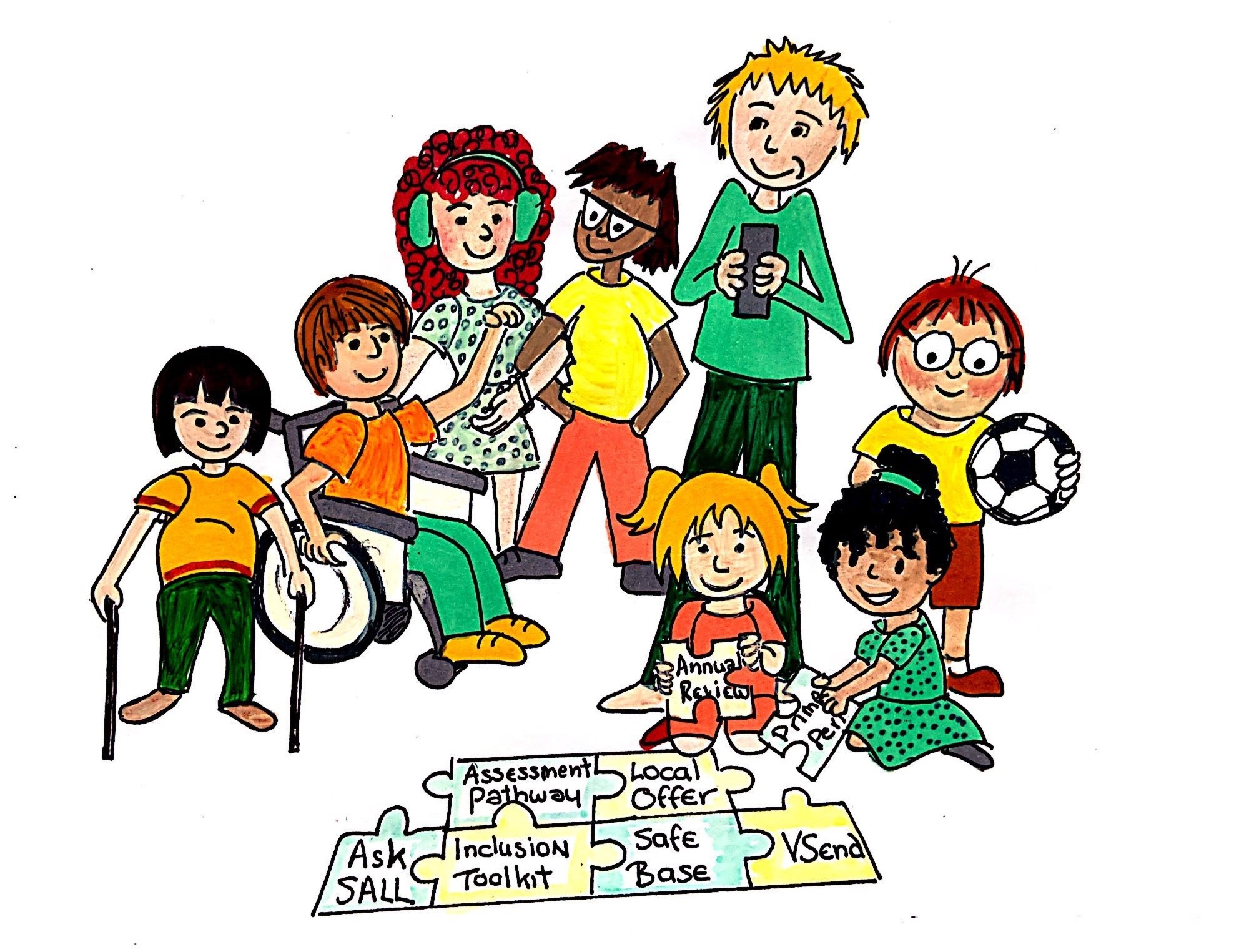Level 7-10 what you may notice
0-5
Level 7-8
The child displays difficulty managing emotional responses leading to challenging, demanding or concerning behaviour. This sometimes affects their own safety or that of others. Displays symptoms of mental health difficulty that that affects regular attendance.
- involved in incidents where intense emotional distress and or impulsive behaviour can put themselves or others at risk
- child is very withdrawn, does not engage in any communication or play with other children. May refuse to attend setting
- significant separation difficulties that persist
- attention is fleeting and is either unfocused or over-focused on a detail or object
- regular (daily) intensive disruption which breaks down the child’s ability to continue with learning
- regularly (daily) exhibits unprovoked, unpredictable behaviour putting themselves and others in danger
- regular (daily) intensive episodes of behaviour (biting, spitting or kicking) which are unpredictable, persistent and extreme in relation to the child’s ages and stages of development.
- difficulties in navigating social situations frequently lead to distress or disruption
- frequent and significant difficulties with eye contact, turn taking and conversation
- child has an aversion to touch and physical affection
- strongly resists physical contact from adults
- deliberate self-harm (MH)
- moderate to severe anxiety (MH)
Level 9-10
The child displays difficulty managing emotional responses leading to extremely challenging, demanding or concerning behaviour. This always affects their own safety or that of others. Displays symptoms of mental health difficulty that likely to endanger themselves or others.
- child has persistent difficulties in functioning and engaging in learning environment
- child shows no awareness when parent or carers leave or arrive or unable to establish attachment to parent or carers
- frequent high anxiety levels and is often totally withdrawn over a period of time
- very little or no attention to activities and surrounding environment
- severe and persistent difficulties in regulating own emotions, evidenced by severe difficulties in social interaction
- documented evidence of foreseeable significant risk of harm to self, peers, adults and property and loss of learning for the child and others. Child shows no awareness or concern about risk of harm
- consistently high levels of severe and challenging behaviour or obsessive behaviour which has the potential to prejudice the education of other children in the setting
- persistent and significant difficulties forming relationships
- severe difficulties recognising others’ emotions. For example difficulties in sharing, turn taking and social interaction
- touch or physical affection cause significant distress and disruption
- unable to tolerate any social interaction other than in meeting own basic needs
- deliberate and regular self-harm (MH)
- eating difficulties or severe anxiety (MH)
5-16
Level 7-8
The pupil consistently shows social and emotional behavioural difficulties which impact on their ability to access a learning environment without highly personalised support. The pupil’s needs are met using a highly personalised approach which will draw on support and advice from other professionals. This will include access to a completely bespoke timetable.
Behaviour for learning
- unable to access learning for the majority of the school day due to resistance to adult direction and resulting escalations of emotion or aggression
- sustained non-engagement in school life Inability or complete refusal to follow school routines and instructions. They have become disengaged from learning, which is having a significant impact on all aspects of learning and behaviour around school.
- significantly socially and emotionally vulnerable, disaffected, withdrawn and isolated, and their unpredictable patterns of behaviour severely impact on their learning.
Social
- withdrawn and does not attempt to form relationships with peers
- they often display socially inappropriate or sexualised behaviour
- inability to sustain positive relationships with adults or peers Increasing difficulties in forming positive relationships, interacting appropriately with adults or peers
Emotional regulation and self-regulation
- significant, persistent difficulties with specific mental health needs, regulating emotions, or understanding the consequences of decisions and actions, leading to high distress levels exhibited through various behaviours on a daily basis, affecting their daily functioning
- struggle with small changes to routine, which often leads to significant distress
- they use harmful coping strategies persistently. For example self-harm, substance misuse, eating disorders
- their high level of anxiety, periods of distress, heightened emotion or withdrawn behaviours make life very difficult on a daily basis, including acting as a barrier to learning. Distress is unpredictable and extreme.
- they experience very low mood and this is impacting on their daily life (including their access to learning)
- they exhibit hyper-vigilance, extreme mood swings or other behaviours that damage relationships with peers and adults, increasing the likelihood of social isolation
- they show an extreme lack of emotional resilience when faced with challenge or criticism. For example flight, fright or freeze response, which is impacting on daily life
General
- increasing patterns of behaviour which place themselves or others at risk of serious harm. For example:
- violence towards peers
- self -harm
- running or absconding
- severe and sustained bullying
- refusal to communicate
- significantly withdrawn
- extreme attachment led behaviours
- has very poor attendance (under 60%)
- behavioural incidents and fixed term exclusions increasing, leading to a high risk of permanent exclusion
- crisis behaviours escalate rapidly due to fluctuating triggers
Level 9-10
The pupil shows severe and persistent social and emotional behavioural difficulties which impact on their ability to access a learning environment without highly personalised support. The pupil’s specified outcomes are met within a specialist setting alongside agreement with outside agency practitioner advice, parents, pupil (if appropriate), local authority SEN manager and school staff
Behaviour for learning
- pupil lacks motivation and interest in surroundings. May become depressed, disaffected and unable to recover their engagement
- inability or complete refusal to follow school routines, instructions or access timetable
Social
- the pupil is extremely withdrawn and shows distress at interactions with peers and adults, meaning that participation in daily life is not possible
- Significant disruption to social situations and periods of heightened emotion or extreme withdrawal, leading to extreme disengagement and isolation
- they frequently undertake extreme sexualised behaviour, including risk-taking
Emotional regulation and self-regulation
- the pupil experiences complex, frequent (daily) and persistent difficulties resulting from mental health problems, which manifest as problems of mood such as anxiety or depression, meaning that they are severely withdrawn from daily life and pose a risk to themselves
- self-harm, suicidal ideation is taking place on a near-daily basis, with serious attempts at suicide
- persistent SEMH issues which lead to difficulty managing emotional responses and result in extremely challenging, demanding or concerning behaviour. This always affects their own safety or that of others
General
- the pupil experiences complex, frequent (daily) and persistent difficulties resulting from problems of conduct (oppositional problems and more severe conduct problems including aggressing), self-harming, substance abuse, eating disorders, sexualised behaviour or difficulties with attachment
- their behaviour is unpredictable and dangerous (either to themselves or others), with intense episodes of emotional or challenging behaviour
- the pupil is unable to co-operate with adults and is not able to plan a way forward on a daily basis or for their long term future.
- long term non-attendance and disaffection
- school refusal
- presents extreme health and safety risk to self and others due to their significant levels of agitation and avoidance of adult direction. Increasing patterns of behaviour including
- use of weapons to harm or threaten
- violence towards peers and staff
- self -harm


